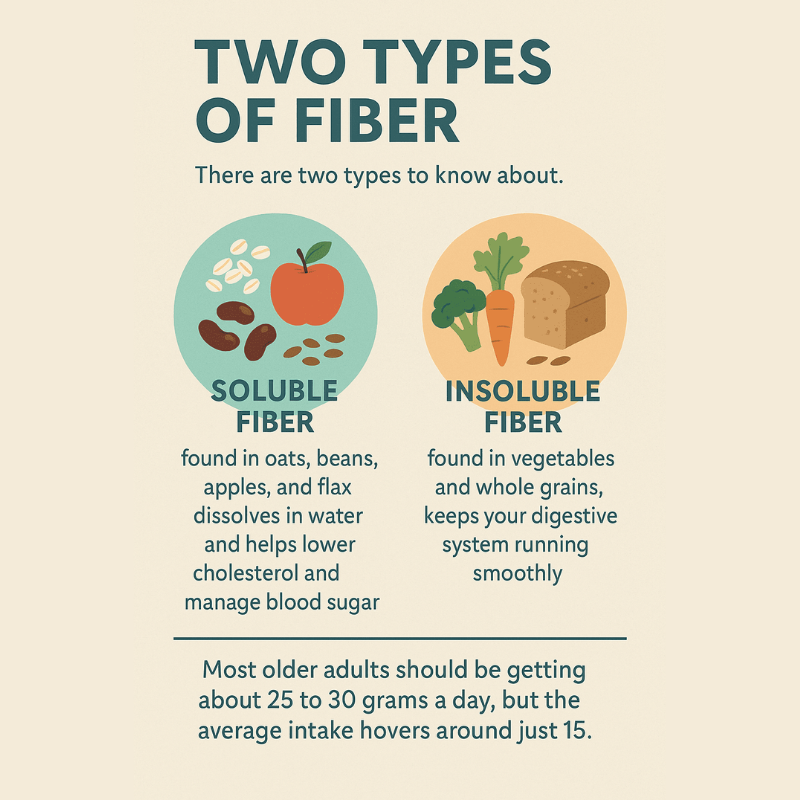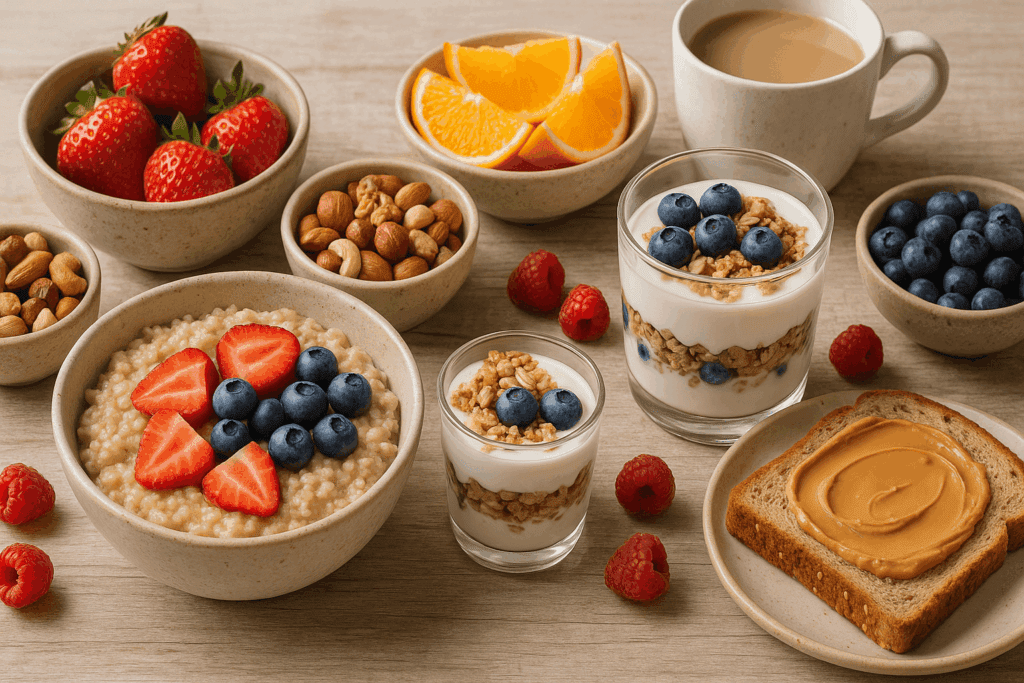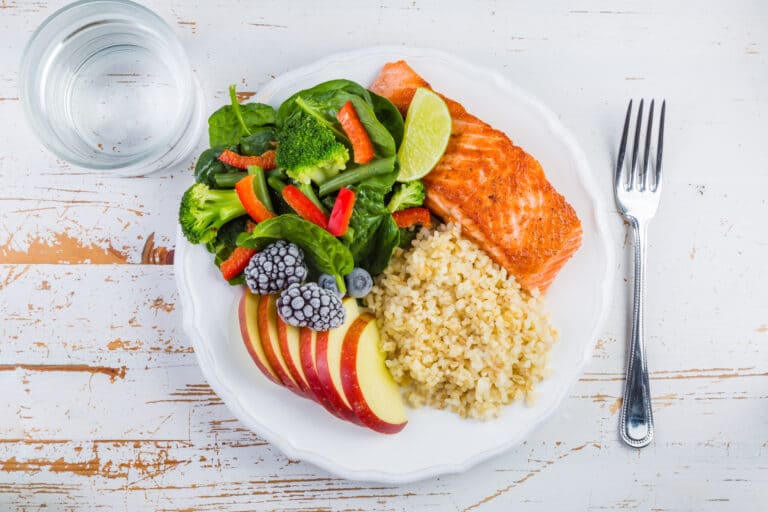As we age, maintaining good health often comes down to the basics and few things are more basic, yet more powerful, than dietary fiber.
Fiber doesn’t sound exciting. But for adults 55 and up, getting enough of it can be the difference between sluggish days and vibrant ones. It’s not just about digestion (though that’s a big one). Fiber plays a crucial role in heart health, weight control, and even longevity, all without needing expensive supplements or strict diets.
Why Fiber is a Big Deal (Especially After 55)
Fiber is the part of plant foods your body doesn’t digest. But that’s what makes it so helpful. As it moves through the digestive system, it does all kinds of important work from keeping you regular to lowering cholesterol and helping you feel full longer.
There are two types of fiber:

Most older adults need 25–30 grams of fiber a day, but many get far less — around 15 grams on average, according to Harvard’s School of Public Health1. The good news? It’s easy to start adding more, and the benefits are noticeable.
“I used to feel sluggish in the afternoons, and my digestion wasn’t great,” says Marjorie R., 73, from South Carolina. “I started adding fruit to my oatmeal and a few more veggies at dinner, and honestly, I feel so much better now. Lighter, more energized.”
Carl D., a 68-year-old retired teacher, adds: “What surprised me most is how full I feel after meals. I used to snack a lot, but since switching to whole grains and adding lentils to soups, I don’t need to anymore. I even lost a few pounds without really trying.”
Five Reasons to Add More Fiber
- Gentle Digestion Support
Many older adults struggle with constipation or slow digestion and fiber can help with that naturally. It adds bulk and helps things move smoothly. - A Healthier Heart
Soluble fiber has been shown to help lower LDL (bad) cholesterol. According to BMJ, each extra 7 grams of fiber per day can cut your risk of heart disease by 9%2. - Easier Weight Control
Fiber helps you feel full, which makes it easier to avoid overeating. That’s especially helpful if you’re trying to lose weight or manage blood sugar. - Better Blood Sugar Balance
Fiber slows the absorption of sugar, helping prevent spikes and crashes — a key part of diabetes prevention and management3.
5. Reduced Risk of Certain Cancers
Research from the American Institute for Cancer Research shows fiber may reduce your risk of colorectal cancer4.
Easy Ways to Get More Fiber


Adding fiber doesn’t have to mean overhauling your diet. Try these simple ideas:
- Start the day with oatmeal and fruit
- Snack on carrots, apples, or nuts
- Add beans to salads, soups, or tacos
- Choose whole grain bread and pasta
- Keep fiber-rich snacks like popcorn or whole grain crackers on hand
You don’t need to be perfect; every little bit helps.
Adding more fiber is one of the easiest, kindest things you can do for your body as you age. It helps you feel lighter, move more comfortably, and enjoy meals more. And the best part? You’ll likely notice the difference within days.
Harvard T.H. Chan School of Public Health. “Fiber.” https://www.hsph.harvard.edu/nutritionsource/carbohydrates/fiber/ ↩
- BMJ. “Dietary fibre intake and risk of cardiovascular disease: systematic review and meta-analysis,” 2013. ↩
- Centers for Disease Control and Prevention. “Diabetes Meal Planning.” https://www.cdc.gov/diabetes/managing/eat-well/meal-plan-method.html ↩
- American Institute for Cancer Research. “Diet, Nutrition, Physical Activity and Colorectal Cancer.” https://www.aicr.org/research/colorectal-cancer/ ↩




